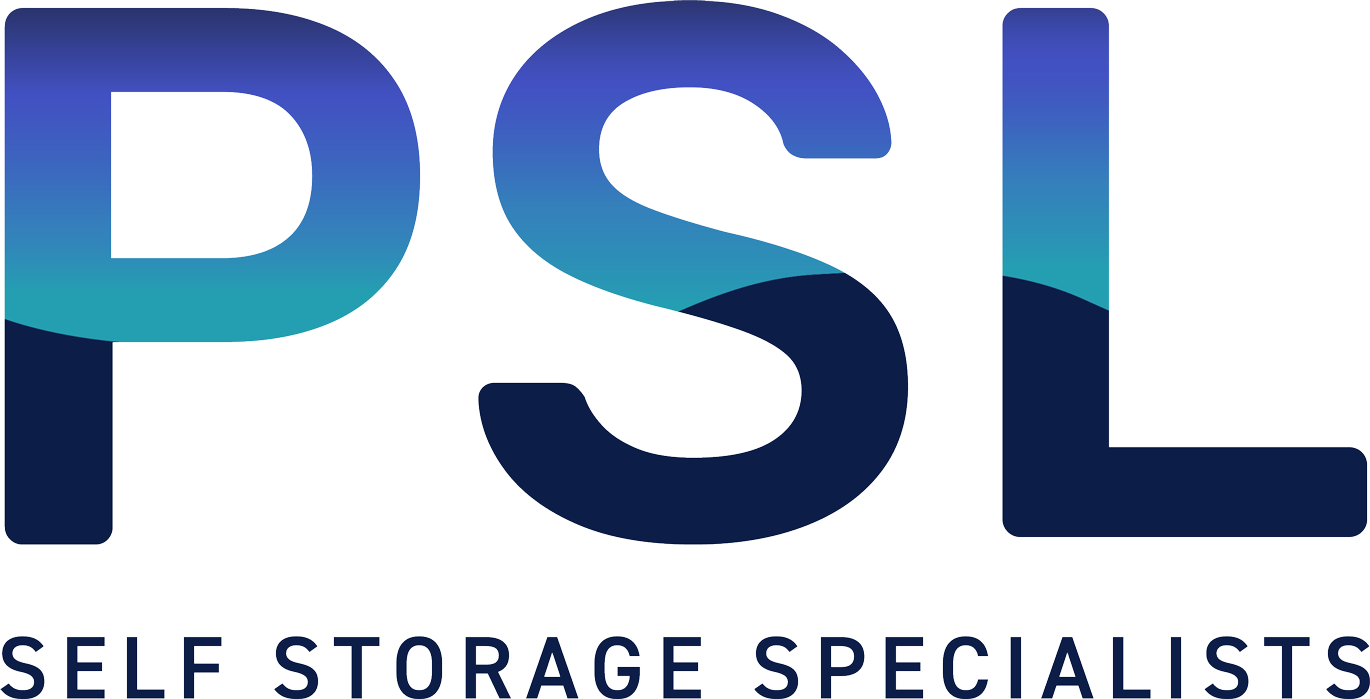In the expanding world of self storage, entering this industry offers substantial growth potential and profitability. However, building a self storage business requires careful planning, understanding market trends, and ensuring that your facility meets customer needs. With the rise of urbanisation and downsizing trends, demand for self storage units continues to surge, making it an ideal time to capitalise on this growing market.
At PSL, we specialise in providing expert guidance for building a self storage business that not only meets regulatory standards but also ensures operational efficiency and long-term success. This comprehensive guide will walk you through the key steps to building a thriving self storage facility, from initial planning to attracting and retaining customers.
1. Understanding the Self Storage Market
Before you dive into building a self storage business, it’s crucial to conduct thorough market research. Understanding local demand, competition, and the types of storage services that will appeal to your target audience is essential for long-term success.
Conduct Market Research
Market research is the foundation of your business plan. Investigate how many self storage facilities operate in your target location, what services they offer, and their pricing strategies. Identify any gaps in the market—perhaps there is a demand for climate-controlled units or flexible leasing terms that competitors aren’t offering. Knowing your local market will help you position your self storage facility for success.
Choose the Right Location
Location is key to the success of your self storage business. Facilities in urban areas tend to attract more customers due to limited residential space, while those in suburban or rural areas may cater more to business storage or seasonal needs. Selecting a location that is accessible and visible from main roads can help increase footfall and maximise occupancy rates.
2. Planning and Design
Once you’ve selected a location and understand your target market, the next step in building a self storage business is planning and design. The design of your facility must be functional, scalable, and compliant with building regulations.
Site Layout and Facility Design
When designing your self storage facility, consider the ease of access for customers. Wide aisles for easy vehicle access, clear signage, and secure entry points are essential for creating a positive user experience. Additionally, plan for various unit sizes to accommodate different storage needs—offering flexibility will attract a wider range of customers.
The overall design should also take into account future expansion. As demand grows, having the ability to add more units or even an additional building without disrupting existing operations will save you time and money in the long term.
For more detailed guidance on site planning and building regulations, visit our page on building regulations.
Compliance with Building Regulations
Ensuring that your facility complies with local building regulations is critical. From fire safety systems to accessibility requirements, all aspects of your facility must meet legal standards. Working with experienced architects and construction teams can help streamline this process, ensuring your project stays on schedule and within budget.
3. Securing Funding and Investment
Building a self storage business is a capital-intensive endeavour, and securing the necessary funding is one of the most significant challenges new operators face. Here are some funding options to consider:
Traditional Bank Loans
Many entrepreneurs turn to bank loans to finance their self storage business. Banks are typically willing to lend for self storage projects because the business model has proven to be stable and profitable. Ensure you have a comprehensive business plan that demonstrates projected earnings, expected occupancy rates, and a clear repayment strategy.
Private Investors
Another option is seeking private investment from individuals or groups interested in the self storage industry. Offering equity in the business in exchange for funding can be an attractive proposal for investors who are looking for long-term returns.
Crowdfunding
Crowdfunding has become an increasingly popular option for new businesses. By offering rewards or equity to smaller investors, you can raise significant capital while building a network of engaged backers.
4. Investing in Security and Technology
One of the most important factors that influence customer decisions when choosing a self storage facility is security. Customers need assurance that their belongings are safe, and investing in advanced security technology will give them peace of mind.
Advanced Security Systems
A modern self storage facility should include 24/7 CCTV monitoring, gated access with keycodes or biometric entry, and individually alarmed units. The more secure your facility, the more likely customers are to trust you with their valuable possessions.
Smart Technology
In today’s digital world, offering tech-savvy solutions such as mobile app access and online payments can differentiate your self storage business from competitors. Implementing cloud-based management systems will streamline operations, enabling customers to book units, pay their bills, and access their units remotely.
5. Marketing Your Self Storage Business
No matter how well-designed and secure your facility is, you need a solid marketing plan to attract customers. Digital marketing, local advertising, and customer retention strategies are essential elements of a successful business.
Build a Strong Online Presence
Most customers begin their search for self storage units online, so having an optimised website is crucial. Ensure your site is mobile-friendly, easy to navigate, and allows for online bookings and payments. Search engine optimisation (SEO) should be at the core of your digital marketing strategy—targeting keywords such as “self storage near me” or “secure storage units in [city]” will help you rank higher on search engines and attract local customers.
Leverage Social Media
Social media is a powerful tool for reaching potential customers. Posting regularly on platforms like Facebook and Instagram, offering promotions, and showcasing your facility’s features can help you engage with your local community and build brand awareness.
Partner with Local Businesses
Partnering with local estate agents, removal companies, and small businesses can increase referrals. Offering discounts or commissions to these partners in exchange for recommendations is a win-win strategy that helps both parties grow.
6. Customer Service and Retention
Once you have built your self storage facility and attracted customers, the key to ongoing success is customer retention. Happy customers are more likely to recommend your business to others and continue using your services for the long term.
Offer Flexible Leasing Options
Flexibility is a significant factor for self storage customers. Offering month-to-month leases, affordable long-term options, and promotions for first-time customers can give you a competitive edge. Be sure to communicate these options clearly on your website and in your marketing materials.
Provide Excellent Customer Service
Good customer service can set your business apart. Ensuring that staff are trained to be friendly, helpful, and knowledgeable about storage solutions will enhance customer satisfaction. Offering additional services such as packing supplies or moving assistance can also boost customer loyalty.
Building a self storage business requires thoughtful planning, investment in technology and security, and a strong marketing strategy. By focusing on creating a customer-centric experience and staying ahead of industry trends, you can build a thriving and profitable business.
At PSL, we are committed to helping you build your self storage facility with expert guidance on design, compliance, and operational efficiency. For more information on how we can assist you in launching a successful self storage business, visit our building regulations page to get started.
Looking for help with your next project?
Whether you are new to self storage or already have an established self storage facility, we can provide you with guidance and a full quotation for any aspect of your works.


